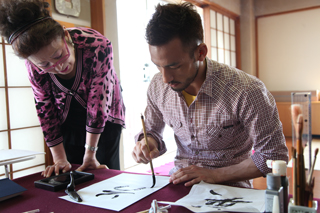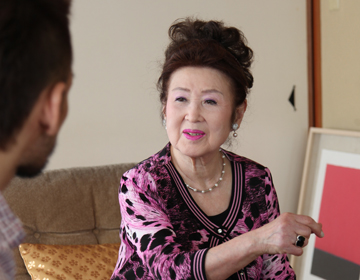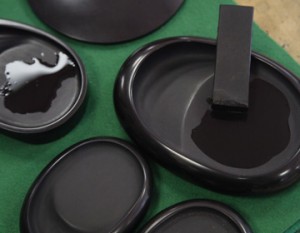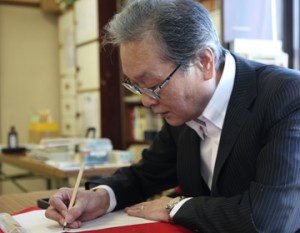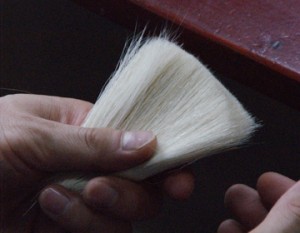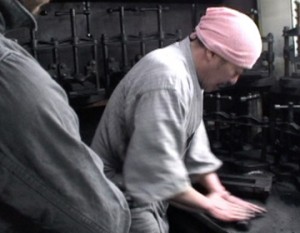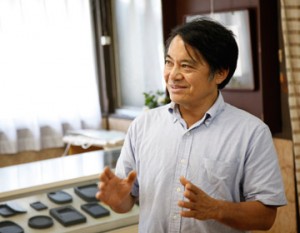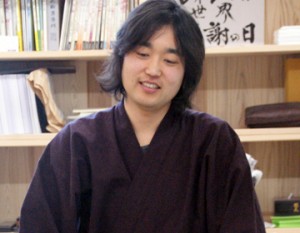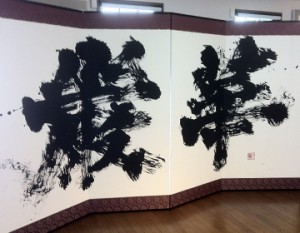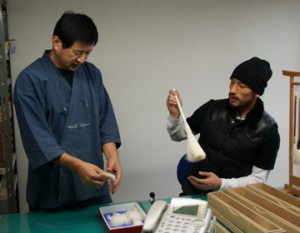Handwriting “Happy Birthday”
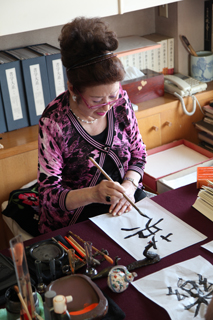
”I want to be able to hand write ”Happy Birthday” neatly.” Because we use text and email messages every day, there is a desire to hand write special messages to convey our true feelings. It makes you happy to be on the receiving end. I think everybody relates to this.
“That’s what people say who come to my class. Some want to learn how to write their names beautifully. I think that’s really wonderful. This is what I refer to as “script for use”. As people get used to writing, they begin to pursue the beauty in the curves and space, or “script as art”. When you reach this level, you become intrigued.”
Harue Yahagi told us. ”Script for use” is for practical use, like Nakata’s “Happy Birthday” message. Once you’re able to write beautiful letters, you start to understand the charm of the letters. “I want to write beautiful letters,” eventually becomes “I want to express more through writing”.
Teaching Calligraphy at Harvard University
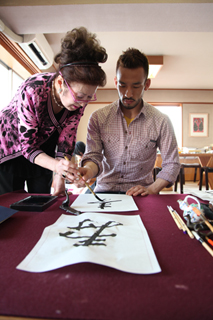
After Yahagi graduated college, she studied Chinese characters under Teshima Yukei and Japanese kana characters under Machi Shunso. After being awarded at the Fine Arts Exhibition, she held her first solo exhibition in 1974. After this, she traveled around Japan, then around the globe, with her exhibition. Her soft gentle expressive calligraphy has attracted people around the world. For 3 years from 1989, she worked as an assistant professor at Harvard University in the Oriental Art History Department. Many of her students first came out of curiosity for oriental art, then start to become engrossed with calligraphy.
As Yahagi mentioned, many people probably want to improve their handwriting. So we asked what she wants students to learn first.
“First, I want them to learn the beauty of letters. It is visibly beautiful, whether it be written in kaisho-style or gyosho-style. I want them to see the gracefulness of the lines, shapes, and the space in between.” When actually practicing, it is most important to “write sentences”. It is important to become accustomed to writing, and then pouring your feeling and emotions into the letters.
Making it legible to express sensation
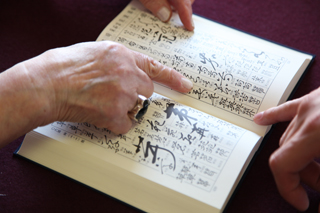
We ask Yahagi to write the word, ”笑” (laughter).
“If you write the letter ”笑” like a square, it won’t be interesting. Emphasizing one line will make a difference. So I do rough drafts first, and from there, I get ideas.” Ms Yahagi told us. However, it’s difficult for the untrained person to know how freely they can be with the shape of the letters.
Nakata asked, “Is there a rule?” Yahagi replied “The only rule is that it needs to be legible. They are letters, so you need to write it correctly to an extent. That is the only rule. You express yourself within this rule.” There is also a manual called the “Gotai Jirui” that explains about writing freehand in Japanese calligraphy.
Lastly, the all-too-familiar calligraphy lesson. The ”sensei” teaches Nakata how to write his name correctly ”中田英寿”.
“The rhythm is important.” Yahagi said, adding “Let’s add a bit of artistic taste.” With “Gotai Jirui” as reference, Nakata considers different ways to write ”英” and then selects one that he likes. There were 110 different ways to write ”寿”. Soon a one of a kind ”英寿” was completed.
“Very well done. You have great rhythm. And you are very open to advice. Aren’t you beginning to find this interesting?”
To this question, Nakata smiled on, looking at this calligraphy.
